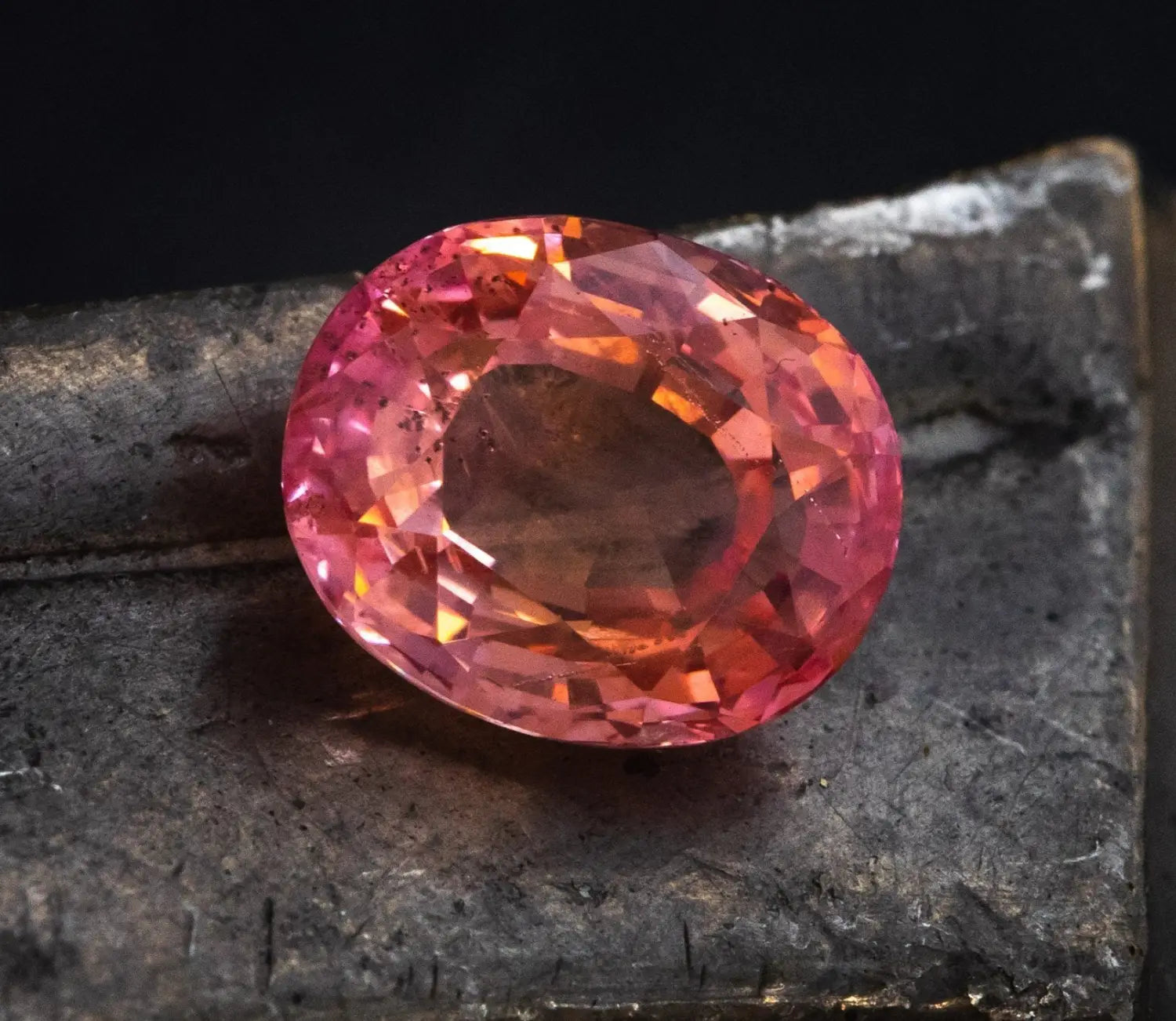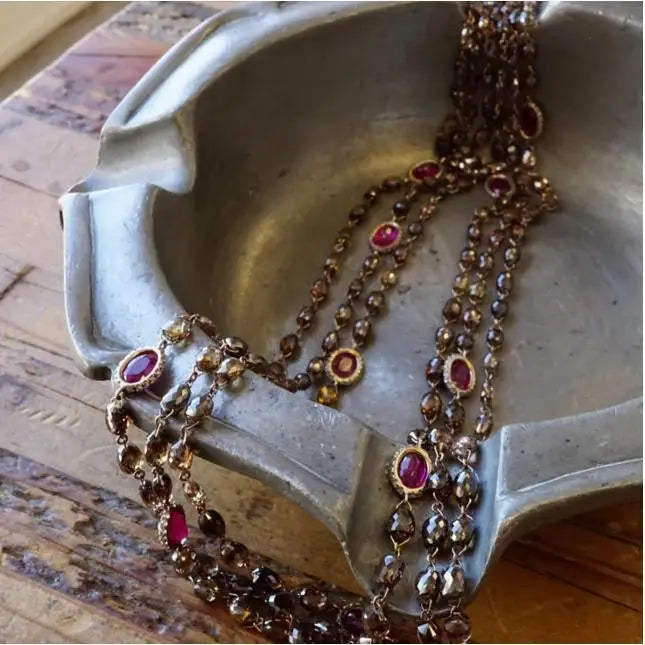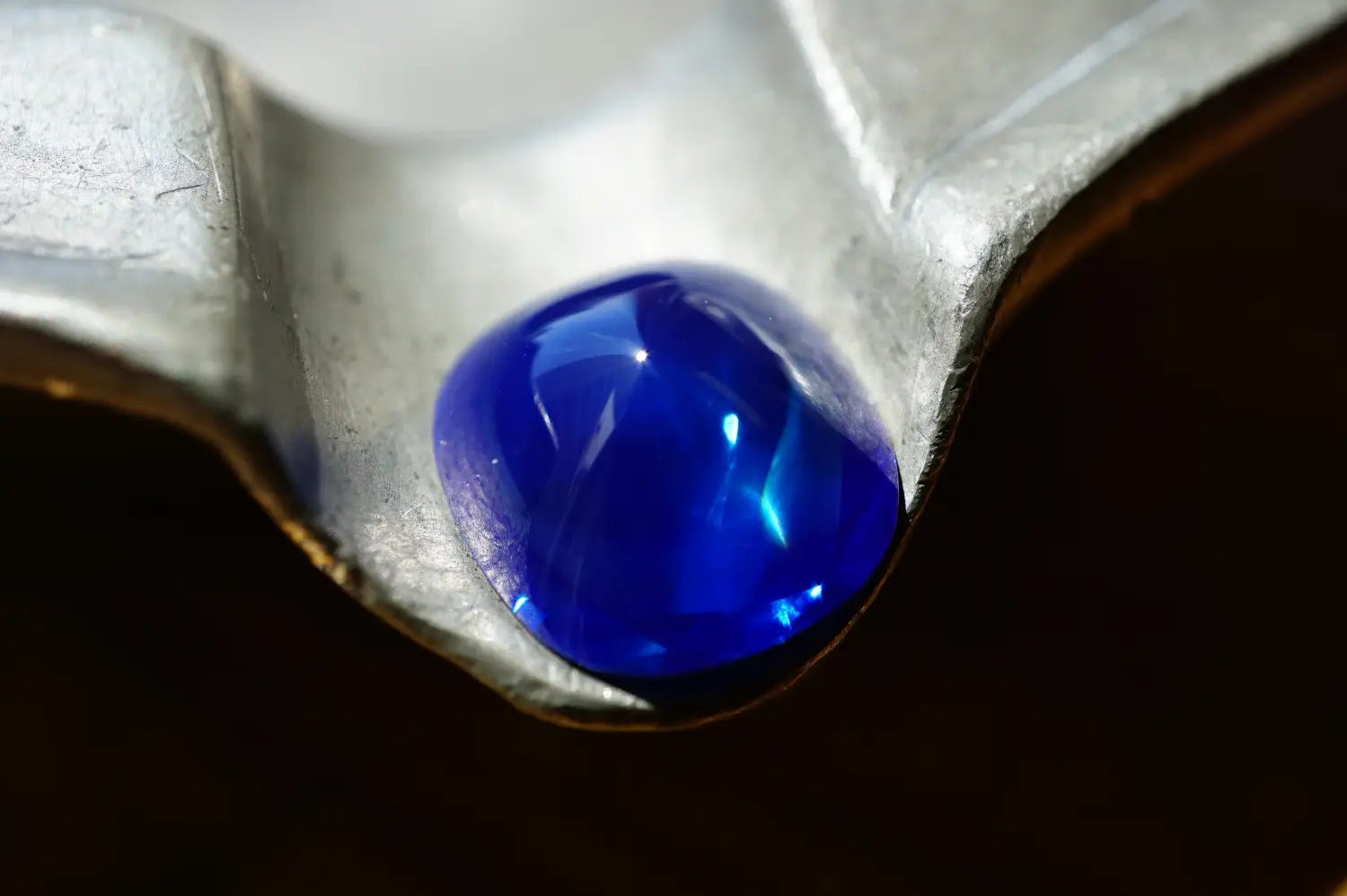
Gemstone Inclusions: The Universe Within
One of the most wondrous things about a gemstone is what’s called “inclusions,” the irregularities that are created within the stone as it’s being formed in the earth. Inclusions are, if you will, a gemstone’s birthmark, Mother Nature’s way of marvelously capturing the memory of the stone’s unique growth process over an immeasurably long period of time. They represent the coming together of energy and the elements to create an exquisite representation of our environment, as well as the history of our planet. And they ultimately play a very significant role in a gemstone’s individuality, breathtaking beauty and undeniable mystery.
An inclusion by definition is a “clarity characteristic” enclosed in a polished gemstone or extending into it from the surface. In diamonds, an inclusion can be one of several things. For instance, there could be a mineral crystal trapped in a diamond as it grows, or there could be what’s called a “cloud,” tightly grouped pinpoints (very small crystals) that create a hazy appearance. There could also be what’s called a “twinning wisp,” a series of pinpoints, crystals and/or clouds that form in a diamond’s growth plane. The list goes on, with each type of inclusion adding its distinct mark on a diamond, serving to distinguish it from others.

Colored stones also have several types of inclusions. Like diamonds, they can have “included crystals,” small mineral crystals that get trapped within a gem as it grows. Similarly, many transparent colored stones, notably emerald and tourmaline, tend to have “fluid inclusions” within their structure, small pockets filled with fluids and sometimes gas bubbles and tiny crystals. Inclusions such as these give us a fascinating glimpse into the formation of such gorgeous gems.
Then there are those inclusions that contribute immensely to a colored stone’s visual appeal. “Cat’s-eye” gems contain groups of needle-like inclusions, sometimes called “silk,” that lie parallel to each other. When light reflects from the inclusions, it creates a silky sheen. If the gem is fashioned as a domed cabochon, this sheen is concentrated across the dome in a thin band resembling a cat’s narrow pupil. This is known as the gemological phenomenon “chatoyancy,” most common in cat’s-eye chrysoberyl.

Fluid inclusions in quartz. Photo courtesy of Nathan Renfro.
When the needle-like inclusions line up in several different directions, however, it causes light to reflect similarly. When these chatoyant bands of light cross at the center of a domed cabochon and extend into rays, they create a striking “star” effect. This is the gemological phenomenon known as “asterism” and can be seen in “star rubies” and “star sapphires.”
“Aventurescence,” meanwhile, is a glittery effect created when light reflects off small, flat inclusions in gemstones such as aventurine quartz and sunstone feldspar. And “horsetails,” golden fiber-like inclusions, can make the interior of a demantoid garnet look like a fireworks display as they radiate from the center of the gem.

Bright-red cinnabar inclusions in barite. Photo courtesy of Nathan Renfro.
Many natural gemstones also exhibit some degree of “color zoning,” which is an uneven distribution of color within the stone. Color zoning is caused by changes in temperature or the unequal incorporation of certain trace elements during a gem’s formation. Some gemstones such as ametrine are actually valued specifically because of their distinctive color zoning. In this case, both amethyst (purple) and citrine (orange) are in the same crystal, with the color zoning believed to be caused by temperature differences across the crystal during its formation that affected the oxidation of iron. These varying colors are a wonderful testament to the journey the gemstone took in the earth as it evolved, from how and where it moved as it formed to what level of trace elements it picked up along the way.
Ultimately, inclusions make each gemstone one-of-a-kind. Just as they say two snowflakes aren’t alike, it’s just as unlikely that two gemstones have the same clarity characteristics in identical locations. This can help identify individual stones, provide valuable information about how a stone formed and help separate natural gemstones from those that are lab-grown and imitations. This is especially true with some of the most valuable gems such as ruby, emerald and sapphire. They and their lab-grown counterparts can often have identical or nearly identical gemological properties. Without different types of inclusions, it would be nearly impossible to tell them apart.

Quartz with complex fluid inclusion composed of water, petroleum, methane and some solids. Photo courtesy of Nathan Renfro.
Here at Jogani, inclusions are something we cherish. Every gemstone we buy or sell has to have inclusions, even if only at the most microscopic of levels. We’re captivated by the story they tell us about each gem and the secrets of the universe they’ve trapped in their formation. We love how they greatly contribute to the allure of a gemstone and are a reflection of just how extraordinary gemstones are. We feel inclusions are a gemstone’s fingerprint, and we celebrate that there’s not another fingerprint exactly like it.


